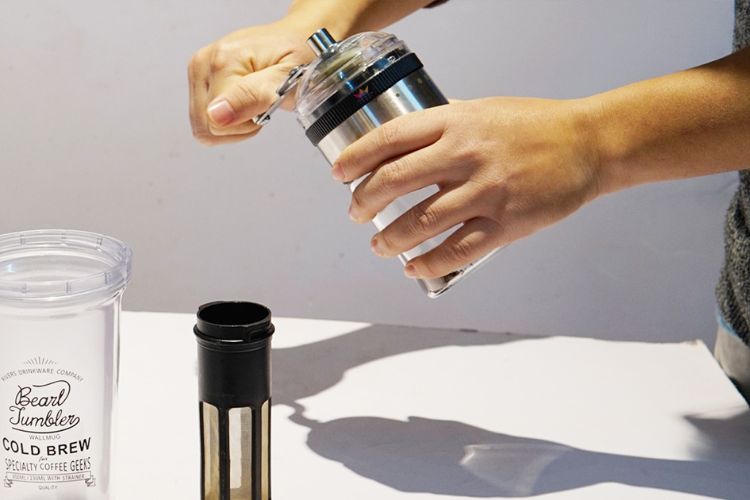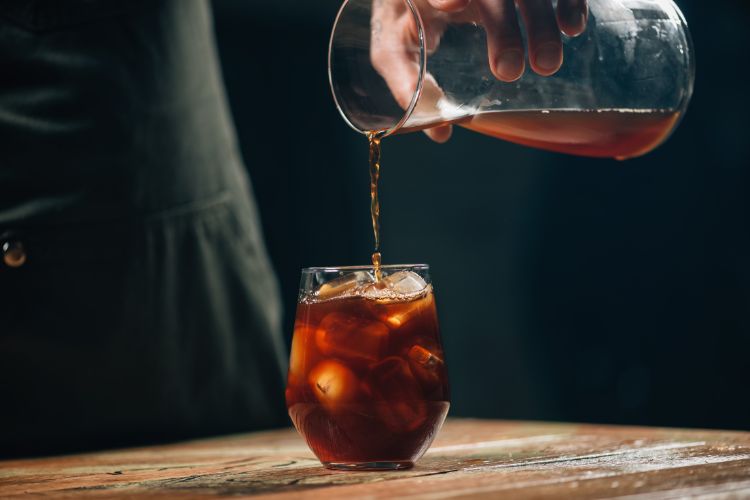
What Kind Of Coffee For Cold Brew In Summer? – Few things on a hot summer day are as enjoyable as a cold brew coffee. However, many coffee drinkers don’t just consume cold brews during the summer.
Many coffee lovers have switched to drinking cold brew coffee all year round since it is so easy always to have a great, cold cup of coffee available.
Among coffee beverages, cold brew is unquestionably one of the rising stars. It has a lot going for it, including a sweet, low-acid flavour profile, purity, and ease of preparation in each energizing cup.
Naturally, not all beans are made equally; some gain more from this treatment than others. Continue reading to find out which coffee beans produce the most excellent cold brew and how cold brewing changes the flavour and aroma of your cup.
Difference between cold brew and iced coffee
Cold brew coffee is different from iced coffee. They seem similar, but brewing methods affect the taste.

Hot coffee becomes iced coffee. It’s coffee made with drip, pour-over, or French press methods using hot water. The brewed coffee cools at room temperature and is chilled before being served with ice. It tastes like hot-water-brewed coffee.
Cold brew coffee brews differently. It is produced with cold-to-room-temperature water. Cold brewing relies on time, not heat, to extract coffee.
Patience’s power

Temperature impacts coffee flavour. I am using hot water to make coffee extracts in particular flavours. It highlights coffee’s acidity and brightness.
Cold brew highlights coffee’s more decadent, smoother flavours. It never uses hot water; cold water reduces acidity and enhances coffee’s richness and depth. It’s slower without heat. Cold-brewing coffee is balanced and smooth.
Patience? Some cold brew processes take 5 or 6 hours, but 12 to 24 is typical. Cold brew requires little hands-on work, just some planning.
The Elements of a Great Cold Brew
Cold brewed coffee has a rich, creamy flavour that frequently includes toasted nut or chocolate undertones. For many people who typically consume ordinary coffee with milk, cold-brewed coffee tastes better when served without any additions. Because cold brew has such a low acidity, many people find that they don’t even need milk.
Additionally, coffee consumers who typically want their coffee sweet discover that cold brew requires no additional sugar because there is less bitterness to balance. After all, cold brew can bring out the sweet notes of coffee while diminishing the harsh ones.
How to Prepare Great Cold Brew
There are two fundamental extraction techniques used to create cold brew coffee. Both are easy to learn at home, and only one of the two techniques needs specialized tools.
By drip

Cold water is dripped over ground coffee to create a cold drip-brew. The extracted coffee is then gradually collected in a carafe placed beneath the brewing apparatus.
Makers of cold brew coffee are both low-tech and fashionable. This modern and attractive equipment fits just as well in a chemistry lab. Some commercial coffee makers can also produce cold brewed coffee, such as the Ninja Hot and Cold Brewed System.
By immersion

This straightforward method of coffee extraction will appeal to minimalists. Cold water is combined with ground coffee, and the mixture is allowed to soak for 12 to 24 hours.
The coffee is then filtered to remove the coffee grounds, leaving a robust and rich beverage behind. Some individuals create a cold brew concentrate that may be diluted to create a great cold coffee beverage.
A mason jar and a method of filtering your brew after it has finished steeping are all you need to make your cold brew home. Your French press is ideal for soaking your ground beans and filtering them out, and it also makes a fantastic cold brew.
What coffee roast produces the best cold brew?
The level of roast has a significant impact on the flavour and aroma of coffee. A remarkable aspect of the adventure is discovering how the colour of coffee beans translates into flavour in the cup.
When selecting your coffee beans, remember that the cold brewing extraction process brings out a different spectrum of flavours in the coffee beans. You might discover that you prefer a different roast of coffee for cold brew than a hot mixture.
The brighter characteristics that distinguish light roast coffee will be muted because this brewing method produces a low acidity, resulting in a delicate flavour. Some believe that the cold brewing process diminishes the benefits of a light roast.
Many people believe that a medium or dark roast creates the most excellent cold brew because the cold brewing procedure brings out those more heavy, chocolaty undertones that are so pleasant in a dark roast coffee flavour.
Cold brewing, while bringing out the rich coffee characteristics in medium or dark roast, also reduces the bitterness, resulting in an atypically smooth and flavorful cup of cold brew.
The ideal grind

The ideal grind for producing cold brew coffee is coarse. Ask for a coarse grind if you are purchasing pre-ground coffee. For the best extraction, the cold water must freely flow through the ground coffee, which can tend to clump together with a finer grind.
A home coffee grinder is frequently used by coffee enthusiasts who start with whole beans of speciality coffee. The most amount of control over the experience is provided by doing this.
For optimal taste retention, finely grind your own whole beans each time you brew (and it also makes your kitchen smell delicious).
How to prepare cold brew coffee
Nothing looks more energizing than ice-filled large glasses of cold coffee. Ice dissolves, though.
It would be a shame to dilute your cold brew after meticulously drawing out every nuanced aroma from your perfectly roasted and ground single-origin coffee beans.
For the unyielding purist within you, there is a straightforward solution. Pour some cold brews into an ice cube tray to chill your coffee. The flavour profile won’t become unbalanced when the frozen cubes melt.
The lack of bitterness and low acidity of cold brew has already been discussed. Due to its smoothness, even those who prefer their coffee with milk or sugar may discover they prefer cold brew on its own.
Even so, you can play up those rich and chocolatey undertones and turn your cold brew coffee into a delectable dessert by adding some sweetness, milk, alt-milk, or cream.
Use an excellent natural sweetener, such as agave syrup. Before serving, add your milk, alternative milk, or cream slowly to see the ribbons bloom in the glass for a delightful visual experience.
Make your cold brew craving go away

Today, give creating your cold brew at home a try. It’s a satisfyingly straightforward and essential procedure. Test out various coffees, brewing times, and ratios until you discover your ideal signature brew. Coffee purists will adore the process as well as the outcome.
This rich, delicately subtle brew will be ready when you need it with a bit of preliminary preparation. Nothing is better than having a jar of smooth, cold-brew ready coffee in your fridge.
It also makes the ideal base for inventive, refreshing coffee beverages. Cold brew is a robust and energizing addition to your usual brewing practice that is simple to learn.
One of the most straightforward techniques is cold brew, and you may find your favourite blend by experimenting with a few different coffee beans and adjusting the steeping time here and there. Cheers to cold brewing!